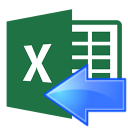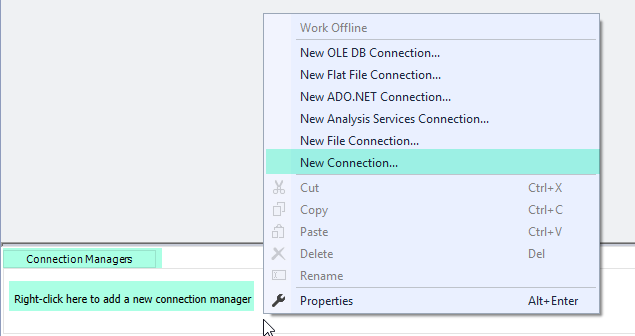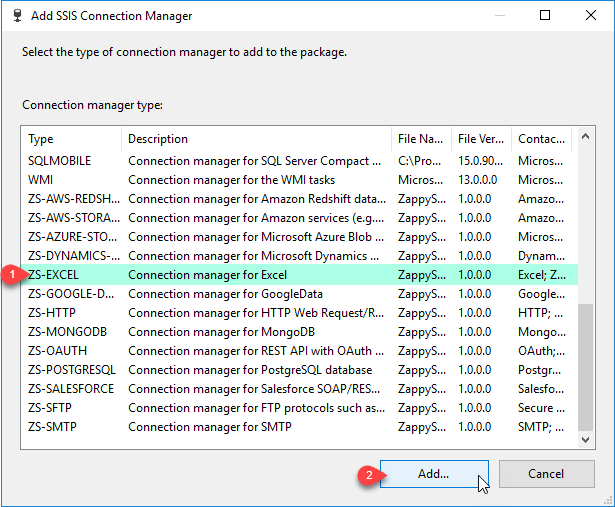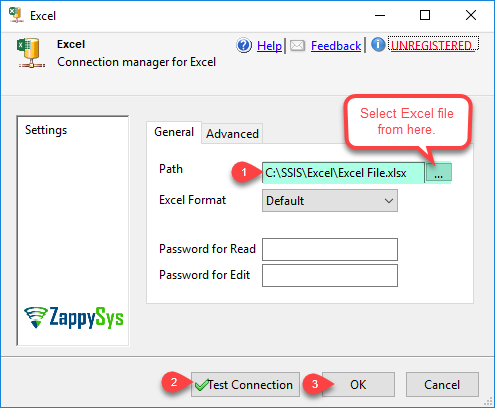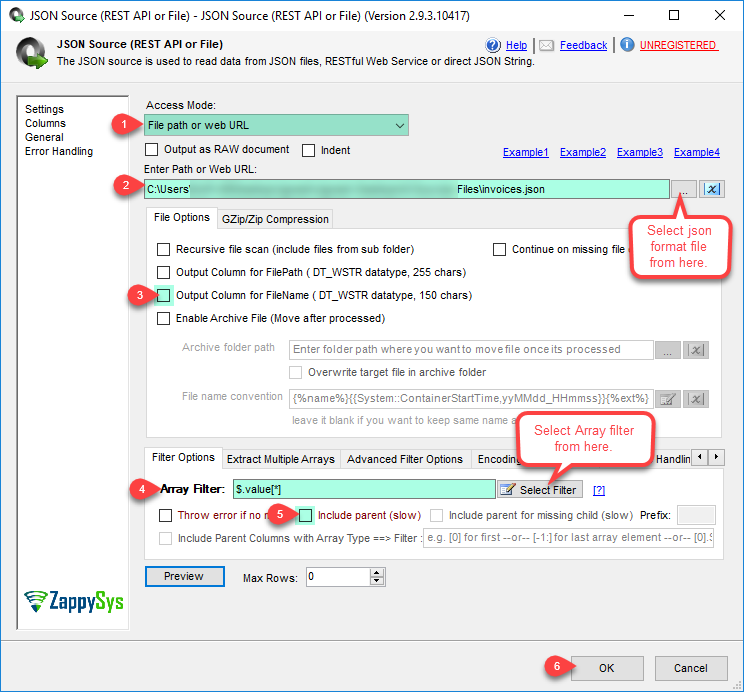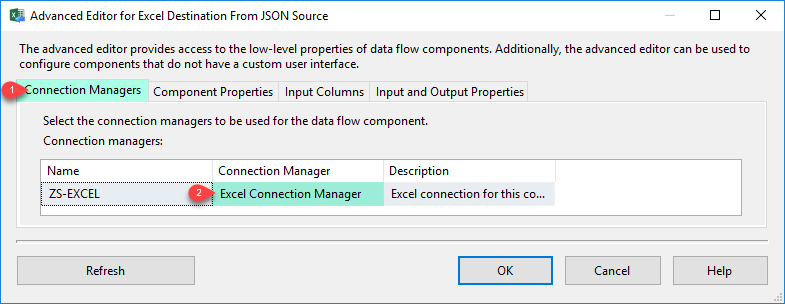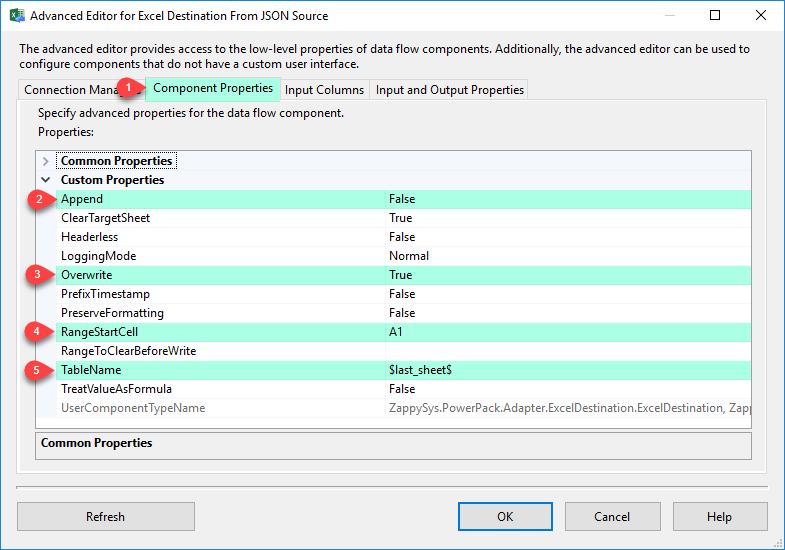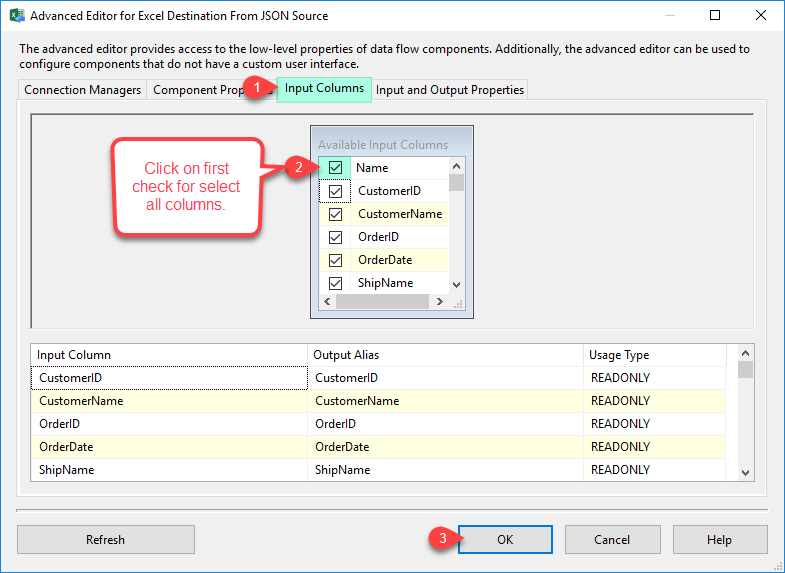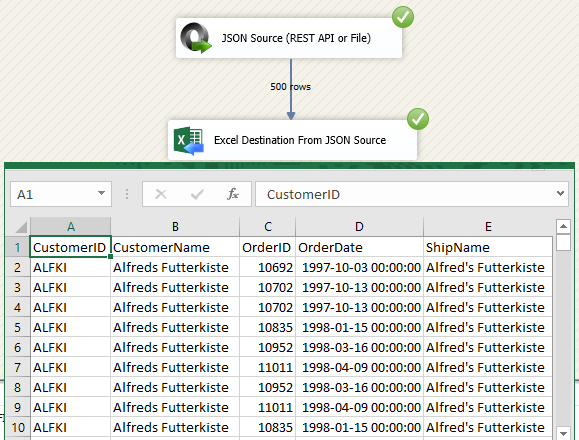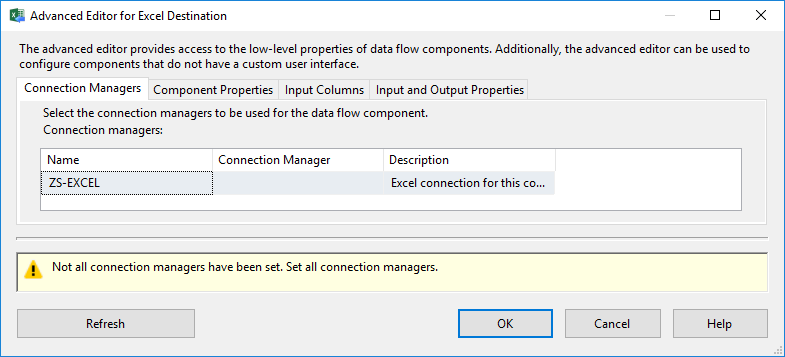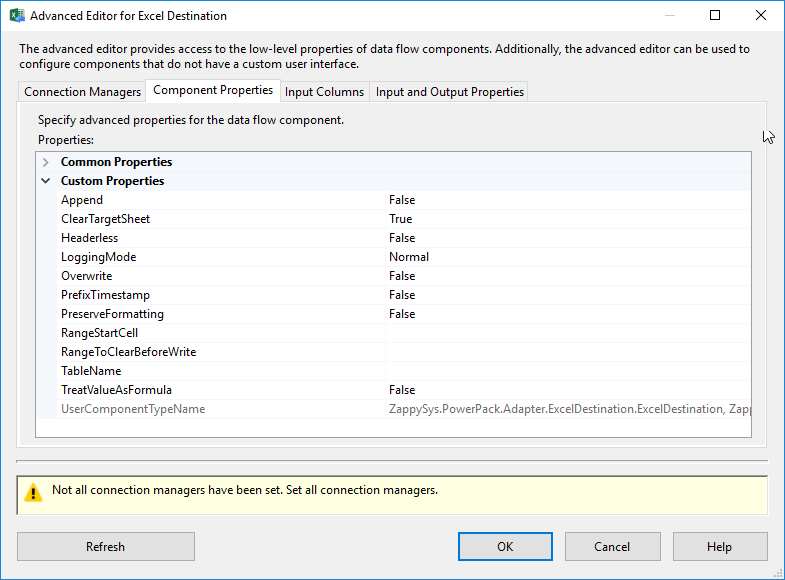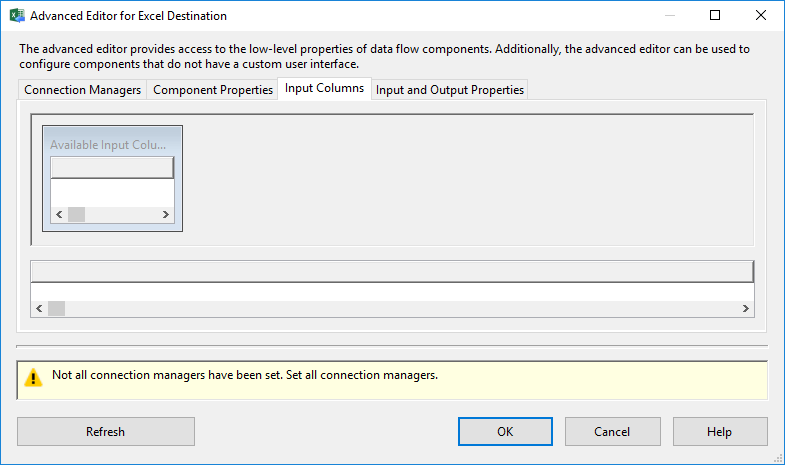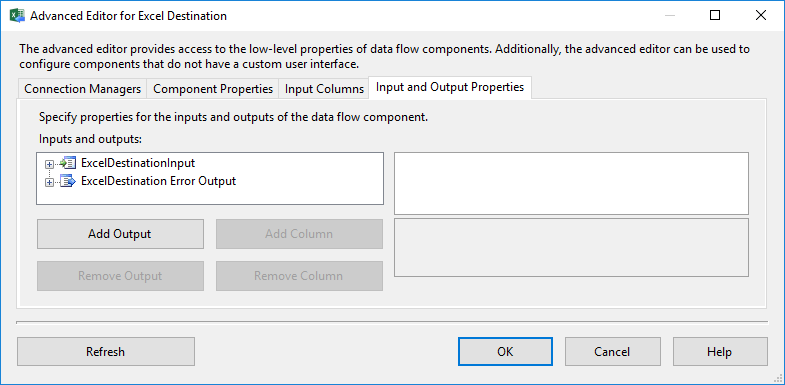| Property Name |
Description |
| LoggingMode |
LoggingMode determines how much information is logged during Package Execution. Set Logging mode to Debugging for maximum log.
Available Options (Use numeric value listed in bracket if you have to define expression on this property (for dynamic behavior).
| Option |
Description |
| Normal [0] |
Normal |
| Medium [1] |
Medium |
| Detailed [2] |
Detailed |
| Debugging [3] |
Debugging |
|
| PrefixTimestamp |
When you enable this property it will prefix timestamp before Log messages. |
| TableName |
Sheet name or named range indicator from which you like to read data. You can use special table name indicators like [$first_sheet$] or [$1$], [$last_sheet$] or [$SomeNumber$]. You can also use Regular expression to get data from multiple sheets with matching name. Syntax:[regex-pattern]--regex (e.g. MySheet_\d+--regex), for example to get all rows from Sheet names Sales-01,Sales-02..Sales-12 you can set Table name as Sheet-(\\d+)--regex . For named range you can use NamedRange:NAME_FOR_RANGE |
| Headerless |
Data has no header row to indicate column names |
| TreatValueAsFormula |
Set this option to true if your value may be formula. When this option is true then any Value starting with = sign will be treated as Formula (e.g. =A1+C1) |
| RangeStartCell |
Range start address for data read/write. Address must be excel cell address (e.g. A1) |
| Append |
Start appending records if existing data found on the target sheet |
| RangeToClearBeforeWrite |
Range you want to clear before writing data (Example: A1:M25). This is helpful when you writing data on existing Sheet and you want to make sure no previous content left in specified area before writing. Sheet is cleared before write in two case either RangeToClearBeforeWrite is supplied --OR-- ClearTargetSheet is set and Append=false. When Target SheetName is not supplied then these both options are ignored. |
| Overwrite |
Overwrite existing file |
| ClearTargetSheet |
When this option is true it clears all used cells in the target sheet before writing any data. When this option is true you must supply Target SheetName you like to clear. Sheet is cleared before write in two case either RangeToClearBeforeWrite is supplied --OR-- ClearTargetSheet is set and Append=false. When Target SheetName is not supplied then these both options are ignored. |
| PreserveFormatting |
Preserve target cell format when clear target sheet option is turned on. |
| DateFormat |
Custom display format for date value where time part is missing. Keep blank to use default format (e.g. yyyy-MM-dd). You can use any valid Standard or custom format specifiers. For standard Date Format use short letters (e.g. d, D, f, F, g, G...) listed here https://learn.microsoft.com/en-us/dotnet/standard/base-types/standard-date-and-time-format-strings. For custom Format specifiers (e.g. yyyy-MM-dd) use any valid values (e.g. d,dd,M,MM,MMM,MMMM,yy,yyyy,H,HH,h,hh,m,mm,s,ss,f,ff,fff,K,t,tt,T,TT,z,zzz...) from here https://learn.microsoft.com/en-us/dotnet/standard/base-types/custom-date-and-time-format-strings. Enter just dot (.) to use default format. This is useful when PreserveFormatting=true and you don't want to use custom format for date time cells. By default PreserveFormatting option is ignored for Int64, Date and DateTime cells and custom format is applied. All other datatypes will respect PreserveFormatting option. If you do not use format for date time then by default numeric value is displayed which you manually have to adjust first time and then PreserveFormatting option helps going forward. |
| DateTimeFormat |
Custom display format for date/time value with time part. Keep blank to use default format (e.g. yyyy-MM-dd HH:mm:ss). You can use any valid Standard or custom format specifiers. For standard Date Format use short letters (e.g. d, D, f, F, g, G...) listed here https://learn.microsoft.com/en-us/dotnet/standard/base-types/standard-date-and-time-format-strings. For custom Format specifiers (e.g. yyyy-MM-dd) use any valid values (e.g. d,dd,M,MM,MMM,MMMM,yy,yyyy,H,HH,h,hh,m,mm,s,ss,f,ff,fff,K,t,tt,T,TT,z,zzz...) from here https://learn.microsoft.com/en-us/dotnet/standard/base-types/custom-date-and-time-format-strings. Enter just dot (.) to use default format. This is useful when PreserveFormatting=true and you don't want to use custom format for date time cells. By default PreserveFormatting option is ignored for Int64, Date and DateTime cells and custom format is applied. All other datatypes will respect PreserveFormatting option. If you do not use format for date time then by default numeric value is displayed which you manually have to adjust first time and then PreserveFormatting option helps going forward. |


